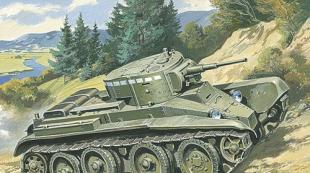Vaninsky district - Vysokogorny settlement. Vysokogorny (Khabarovsk Territory) Education and culture
Russia is my Motherland!
Russia is my favorite country,
“Russia is a powerful word!”
I'll say it proudly.
My name is Prokopchuk Ksenia. I am in 5th grade. I was born and live in the village of Vysokogorny. This is where my small homeland begins. I believe that the Motherland is the place where I was born, where my grandparents, mother and father live. The homeland is the most precious place on earth. Every person loves their homeland in their own way.
I love my homeland for its beautiful nature and rich vegetation. I love hills with impenetrable taiga. I love the cool river in the summer, colorful and fragrant flowers with butterflies in the meadows, and the singing of birds. I love clean and fresh air in winter. I even love the cawing of crows. I love my home, my yard, my parents, my friends. Because it’s all dear to me, it’s all mine. I love my village. Although, I believe that the village has a big drawback - there are no asphalt roads or sidewalks. But I hope that this problem will be solved in the near future. And I will be able to fulfill my dream - rollerblading on asphalt. But other than that, I really like our village. A new House of Culture was recently opened. It has become very fun in the village: they now hold many holidays, hold discos, and show films. Many clubs are held for children. I myself actively visit some of them. I go to a dance club, to drawing, to a puppet theater. I study English and skiing. I participate in all competitions, promotions and Olympiads. I lead an active and healthy lifestyle. And I can do all this thanks to my small Motherland. That's why I love her!
Every person should not only enjoy the benefits of their Motherland, but also take care of it and try to do something useful for it. For now, I can simply love nature and animals and not harm them, not litter the village with garbage. But for now, my main benefit is to successfully study and master knowledge, which is what I try to do. In the future, go to university and get a profession. Become a worthy and educated person and benefit your homeland.
But a small Motherland is unthinkable without a big Motherland - our great and vast country, Russia. I am happy and glad that I was born and live in this country, because only in this country do people live: hardworking, hospitable, courageous, heroic, creative and sympathetic. How much grief and devastation our people had to endure during the Second World War, but our people, showing courage, survived and won. And thanks to this, we live in peacetime, and there is peace in our country. And peace is the most important thing on earth. I am proud and love my Motherland, because it has such an intelligent and worthy president V.V. Putin, who does a lot for his people and the world as a whole. I feel proud that I am part of this country, part of this big world. Perhaps, as I get older, I will be able to more deeply appreciate and love our great Motherland. It’s hard for me to say now which Motherland is more valuable - the small one or the big one. But I know one thing: both the big and small Motherland are equally important to me. For me it is an inextricable whole. And I love them as much as I can.
I want our Motherland to become richer and more beautiful. It also depends on us, the youth. We must do our best. The future of our country lies with the younger generation. I love my Motherland very much and will always love it, even just because it exists!
Vysokogorny is an urban-type settlement in the Vaninsky district of the Khabarovsk Territory of Russia. The administrative center of the Vysokogornensky urban settlement. Located in the mountainous area of Sikhote-Alin (at an altitude of about 450 meters), 140 kilometers northwest of the regional center of Vanino, on the banks of the Muli River. Railway station on the line Komsomolsk-on-Amur - Sovetskaya Gavan.
The village of Vysokogorny was founded in October 1943 as the Muli station of the Construction Administration, and on January 8, 1947, by a decree of the Council of Ministers of the USSR, the station, together with the Komsomolsk-on-Amur-Sovetskaya Gavan railway line, was included in the Far Eastern Railway and transferred from Primorsky Krai to Khabarovsk. In 1949, in accordance with the resolutions of the Presidium of the Supreme Council of the RSFSR and the Executive Committee of the Sovetsko-Gavansky District Council, the Executive Committee and the Village Council were formed at the Muli station, and the station acquired the status of the working village of Muli, which was part of the suburban zone of the city of Sovetskaya Gavan. On June 10, 1955, the working village of Muli was renamed the working village of Vysokogorny. In 1972, after the formation of the Vaninsky district, the village was included in its composition.
Population
Economy
On the territory of the Vysokogornensky urban settlement there are a number of railway enterprises, such as: locomotive depot TC-10, signaling and communication distance ShCh-10, civil structures distance NGCh-8, water supply distance VoDch-4, track distance PCh-18, power supply distance ECh- 5, recovery train VP-413, fire train (VOKhR), Vysokogornaya railway station, 2nd class. The forest industry of the Vysokogornensky urban settlement is represented by logging enterprises LZU JV "Arkaim".
Education and culture
The total number of cultural workers in the settlement is 26.5 units. The activities of the House of Culture in the village of Vysokogorny are aimed at providing cultural and leisure services to the population of the working settlement. In the House of Culture, 25 creative club formations are steadily operating, which are attended by 392 people. Of these, 14 are formations for children under 14 years of age (245 participants). There are two general educational institutions in the village: a secondary school for 920 students, with 387 students actually studying, and a kindergarten, which is attended by 110 children. There is a municipal educational institution for children's education "Children's Art School", located in a residential building. In the Vysokogornensky urban settlement there is a library-branch No. 5 of the Municipal Library "Central Library", the premises are located in the village House of Culture. Activities for organizing cultural and leisure events are carried out by a branch of the municipal institution "District House of Culture" - the House of Culture of the village of Vysokogorny.
Healthcare
Medical care for the population is provided by the non-governmental healthcare institution “Departmental Hospital at Komsomolsk Station” (a structural unit at Vysokogornaya station) of Russian Railways OJSC, there is a hospital with 30 beds...
| Country | Russia |
| Federal subject | Khabarovsk region |
| Municipal district | Vaninsky district |
| urban settlement | Vysokogornenskoe |
| Coordinates | Coordinates: 50°05′46″ N. w. 139°07′22″ E. d. / 50.096111° n. w. 139.122778° E. d. (G) (O) (Z)50°05′46″ N. w. 139°07′22″ E. d. / 50.096111° n. w. 139.122778° E. d. (G) (O) (I) |
| Founded | 1943 |
| Population | ▼ 3375 people (2010) |
| PGT with | 1949 |
| Postal code | 682855 |
| Former names | until 1955 - Muli |
| Dialing code | +7 42137 |
| Vehicle code | 27 |
| First mention | 1943 |
| Center height | 566 m |
| OKATO code | 08 212 555 9 |
| Time zone | UTC+11 |
Vysokogorny is an urban-type settlement in the Vaninsky district of the Khabarovsk Territory of Russia. The administrative center of the Vysokogornensky urban settlement.
Population 3,375 (2010 census). Located 140 kilometers northwest of the regional center of Vanino, on the banks of the Muli River. Railway station on the line Komsomolsk-on-Amur - Sovetskaya Gavan.
Economy
On the territory of the Vysokogornensky urban settlement there are a number of railway enterprises, such as: locomotive depot TC-10, signaling and communication distance ShCh-10, civil structures distance NGCh-8, water supply distance VoDch-4, track distance PCh-18, power supply distance ECh- 5, recovery train VP-413, fire train (VOKhR), Vysokogornaya railway station, 2nd class - The forestry industry of the Vysokogorny urban settlement is represented by logging enterprises LZU JV "Arkaim"
Story
The village of Vysokogorny was founded in October 1943 as the Muli station of the Construction Administration, and on January 8, 1947, by a decree of the Council of Ministers of the USSR, the station, together with the Komsomolsk-on-Amur-Sovetskaya Gavan railway line, was included in the Far Eastern Railway and transferred from Primorsky Krai to Khabarovsk. In 1949, in accordance with the resolutions of the Presidium of the Supreme Council of the RSFSR and the Executive Committee of the Sovetsko-Gavansky District Council, the Executive Committee and the Village Council were formed at the Muli station, and the station acquired the status of the working village of Muli, which was part of the suburban zone of the city of Sovetskaya Gavan. On June 10, 1955, the working village of Muli was renamed the working village of Vysokogorny. In 1972, after the formation of the Vaninsky district, the village was included in its composition.
Healthcare
Medical care for the population is provided by the National Health Institution "Nodal Hospital" at the Vysokogornoye station of JSC "Russian Railways", located at the Vysokogornoye station of the Komsomol branch of the Far Eastern Railway, has a hospital with 50 beds and a polyclinic department for 100 visits per shift. The hospital includes 5 departments. At the National Health Institution "Nodal Hospital" at the station Vysokogornaya JSC "Russian Railways" has an emergency medical aid post of the emergency medical care department of the Central Regional Hospital.
Education and culture
The total number of workers in the cultural sector in the settlement is 26.5 units.
The activities of the House of Culture in the village of Vysokogorny are aimed at providing cultural and leisure services to the population of the working settlement. In the House of Culture, 25 creative club formations are steadily operating, which are attended by 392 people. Of these, 14 are formations for children under 14 years of age (245 participants).
There are two general educational institutions in the village: a secondary school for 920 students, with 387 students actually studying, and non-state kindergarten No. 257 (Russian Railways), which is attended by 110 children. There is a municipal educational institution for children's education "Children's Art School", located in a residential building.
In the Vysokogornensky urban settlement there is a library-branch No. 5 of the Municipal Library "Central Library", the premises are located in the village House of Culture. Activities for organizing cultural and leisure events are carried out by a branch of the municipal institution "District House of Culture" - the House of Culture of the village of Vysokogorny.
Population
Connection
The village has a transceiver complex that receives four TV channels - Channel One, Russia-1, NTV, and First Regional Television. There is a postal service and an automatic telephone exchange station with 200 numbers.
Digital television was launched in the village, containing 8 channels (“Channel One”, “Russia 1”, “Russia 2”, “Russia K”, “Russia 24”, NTV, “Petersburg-Channel Five” and “Carousel” "), there is also a telephone connection and Internet access. In addition, residents of the settlement use cellular communication services (Beeline, Megafon including the new 3G standard, and MTS GSM/GPRS/EDGE)).
Urban settlement "r.p. Vysokogorny"
PASSPORT
Vysokogorny urban settlement
Vaninsky municipal district of Khabarovsk Territory
Foundation of Vysokogorny city
The village of Vysokogorny was founded in October 1943 as the Muli station of the Construction Department, and on January 8, 1947, by a decree of the Council of Ministers of the USSR, the station, together with the Komsomolsk-Sovetskaya Gavan railway line, was included in the Far Eastern Railway. In 1949, in accordance with the resolutions of the Prisidium of the Supreme Council of the RSFSR, the Executive Committee of the Sovetsko-Gavansky District Council, an Executive Committee and a village Council were formed at the Muli station, and the station acquired the status of a working village of Muli. On June 10, 1955, the working village of Muli in the suburban zone of the city of Sovetskaya-Gavan, Khabarovsk Territory, was renamed into the working village of Vysokogorny, and became part of the newly formed Vaninsky district of the Khabarovsk Territory.
Cartographic description of the border of the Vysokogornenskoye urban settlement
From the peak with an elevation of 897.9 in the upper reaches of the sources of the Khrebtovy and Zemnoy streams on the border of the Vaninsky and Komsomolsky municipal districts with the Civil Code 50°17"26"" N and 138°51"10" N, the border of the Vysokogornensky urban settlement runs in the north-east, and then in the eastern directions along the watershed of the Ata river and the Khombirani stream, through the peaks 1079.2 (Mount Khrebtovaya with 849.9; 855.9; 0.3 km southwest of height 907); 2, where the border turns south and follows the peaks 1038.0; 1169.4, turns southeast and follows the peaks 1315.7; with GP) - on the Big Young ridge, further along the spur of this ridge to the southeast through peaks 1015.0; km into the Plodorodny stream, after 2 km it flows into the Syrovatka river, and along it to the confluence with the Muli river on the left after crossing the railway to Sovetskaya Gavan. Then the border crosses the Muli river and rises along the Gorely stream in the south-eastern and southern directions. before the Sokhatiny stream flows into it 10 km from the left, then along the Sokhatiny stream to its source, then the watershed rises to the top with a mark of 922.0, from where it turns west and reaches the point of adjoining the border of the Vaninsky and Komsomolsky municipal districts with the Civil Code 49° 58"58""N and 139°25"06"E on the Sikhote-Alin ridge. Further, the border of the Vysokogornensky urban settlement coincides with the border of the Vaninsky municipal district and follows it first in the western and then in the northern directions to the starting point.
Composition of the territory of the Vysokogornensky urban settlement
The territory of the Vysokogornensky urban settlement of the Vaninsky municipal district consists of lands with a total area of 37.65 sq. km. The territory of the municipality includes the territories of stations located along the railway: Datta station, with an area of 38 hectares; Oune station with an area of 38 hectares; Kosgrambo station with an area of 27 hectares; Kuznetsovsky station with an area of 54 hectares; Sollu station; Art. Otkosnaya, as well as adjacent public lands, recreational areas and other lands within the boundaries of the municipality, regardless of ownership and purpose.
The Vysokogorny urban settlement borders the Komsomolsky district at 174 km to the station of Oune, inclusive, and the territory of the Kenadsky rural municipality at 260 km, and 212 km from the regional center of the Vaninsky district.
Demographic characteristics of the Vysokogornensky urban settlement
The total population of the Vysokogornensky urban settlement is 3849 people.
The state of the social sphere of the Vysokogornensky urban settlement
The state of cultural and educational institutions
In the Vysokogornensky urban settlement there is a library-branch No. 5 of the MU "CBS". The library occupies a room with a total area of 130.7 m2, the premises are located in the village House of Culture. The library staff consists of 2 people.
The village has a municipal educational institution for children's education "Children's Art School", the total area of the premises is 177.9 sq.m. It is located in a residential building. The building was put into operation in 1994. The depreciation of the building was 36%.
Currently, on the territory of the settlement, activities for the organization of cultural and leisure events are carried out by a branch of the municipal institution "District House of Culture" - the House of Culture of the village of Vysokogorny, the staff number of the institution as of January 1, 2009 is 16.5 units, the institution is located at the address of the village of Vysokogorny, st. Mira, 2.
The total number of workers in the cultural sector in the settlement is 26.5 units.
The activities of the House of Culture in the village of Vysokogorny are aimed at providing cultural, mass and leisure services to the population of the working settlement. In the House of Culture, 25 creative club formations are steadily operating, which are attended by 392 people. Of these, 14 are formations for children under 14 years of age (245 participants).
Education
There are two educational institutions in the village:
A secondary educational school for 920 students, 387 students actually study (the workload is 49.9%). The building is a 3-story brick building built in 1984. At the expense of the local budget, a major repair of the roof was carried out.
Non-state kindergarten No. 257 (Russian Railways), designed for 110 children, is actually attended by 110 children (workload - 72%). The building is a 2-story brick building built in 1972.
The institutions are provided with teaching staff, there are no vacancies. There are 51 teachers in total.
Healthcare
Medical services to the population are provided by the National Health Institution “Nodal Hospital at the station. Vysokogornoye JSC Russian Railways, located at the Vysokogornoye station of the Komsomol branch of the Far Eastern Railway, has a hospital with 50 beds and a polyclinic department with 100 visits per shift. The building is 4-storey brick, built in 1987.
The hospital includes 5 departments:
Surgery Department;
Therapeutic department;
Children's department;
Has obstetric beds to provide emergency and emergency medical care;
If necessary, infectious disease beds are deployed.
The hospital staff consists of 12 doctors and 32 paramedical personnel.
At the National Health Institution “Nodal Hospital at St. Vysokogornaya JSC "Russian Railways" has an ambulance post of the emergency medical care department of the Central Regional Hospital.
In the village there are two pharmacies of Panacea LLC (T.N. Gutsol) and a pharmacy of the private enterprise Lozitskaya V.A.
Economy of Vysokogornensky urban settlement
State of housing and communal services
Housing and communal services in the village are represented by Usluga LLC.
The housing stock of the Vysokogornensky urban settlement is mainly municipal, consisting of 226 houses with a total area of 69.7 thousand sq.m. The Far Eastern Railway has 31 houses with a total area of 7.0 thousand sq.m. Citizens personally own 16 houses with a total area of 1.6 thousand square meters. m.
Electricity supply in the Vysokogornensky urban settlement is centralized, the total length of the electrical networks is 99 kilometers, of which 46.4 km. are undergoing maintenance at VMP Energoset"
Forestry industry
The forest industry of the Vysokogornensky urban settlement is represented by logging enterprises LZU JV "Arkaim", LLC "Lev".
Trade, public catering and consumer services
The population of the Vysokogornensky urban settlement is served by 41 retail trade enterprises, two catering enterprises, 3 consumer service facilities, and 2 pharmacies.
Connection
The village has a transceiver complex that broadcasts four television programs: ORT, RTR, REN-TV, postal service, and an automatic telephone exchange station with 200 numbers. In addition, residents of the settlement use cellular communication services (Bee-Line, MTS, Megafon).
Rail transport
On the territory of the Vysokogornensky urban settlement there are a number of railway enterprises, such as: locomotive depot TC-10, signaling and communication distance ShCh-10, civil structures distance NGCh-8, water supply distance VoDch-4, track distance PCh-18, power supply distance ECh- 5, recovery train VP-413, fire train (VOKhR), Vysokogornaya railway station, 2nd class.
The total population employed at railway transport enterprises is about 1,300 people.
Roads
The length of the road network of the Vysokogornensky urban settlement is 19,970 linear meters. All roads are unpaved.
Economic basis of the Vysokogornensky urban settlement
The economic basis of the settlement is the property and budget of the Vysokogornensky urban settlement.
(G) (I) Coordinates: 50°05′46″ n. w. 139°07′22″ E. d. / 50.09611° N. w. 139.12278° E. d. / 50.09611; 139.12278(G) (I)Located in the mountainous area of Sikhote-Alin (at an altitude of about 450 meters), 140 kilometers northwest of the regional center of Vanino, on the banks of the Muli River. Railway station on the line Komsomolsk-on-Amur - Sovetskaya Gavan.
Story
The village of Vysokogorny was founded in October 1943 as the Muli station of the Construction Administration, and on January 8, 1947, by a decree of the Council of Ministers of the USSR, the station, together with the Komsomolsk-on-Amur-Sovetskaya Gavan railway line, was included in the Far Eastern Railway and transferred from Primorsky Krai to Khabarovsk. In 1949, in accordance with the resolutions of the Presidium of the Supreme Council of the RSFSR and the Executive Committee of the Sovetsko-Gavansky District Council, the Executive Committee and the Village Council were formed at the Muli station, and the station acquired the status of the working village of Muli, which was part of the suburban zone of the city of Sovetskaya Gavan. On June 10, 1955, the working village of Muli was renamed the working village of Vysokogorny. In 1972, after the formation of the Vaninsky district, the village was included in its composition.
Population
| Population | ||||||
|---|---|---|---|---|---|---|
| 1959 | 1970 | 1979 | 1989 | 2002 | 2009 | 2010 |
| 7561 | ↘ 4935 | ↘ 4394 | ↘ 4244 | ↘ 4044 | ↘ 3841 | ↘ 3376 |
| 2011 | 2012 | 2013 | 2014 | 2015 | 2016 | |
| ↘ 3363 | ↘ 3323 | ↘ 3159 | ↗ 3167 | ↘ 3151 | ↘ 3105 |
Economy
- On the territory of the Vysokogornensky urban settlement there are a number of railway enterprises, such as: locomotive depot TC-10, signaling and communication distance ShCh-10, civil structures distance NGCh-8, water supply distance VoDch-4, track distance PCh-18, power supply distance ECh- 5, recovery train VP-413, fire train (VOKhR), Vysokogornaya railway station, 2nd class.
- The forest industry of the Vysokogornensky urban settlement is represented by logging enterprises LZU JV "Arkaim".
Education and culture
The total number of workers in the cultural sector in the settlement is 26.5 units.
The activities of the House of Culture in the village of Vysokogorny are aimed at providing cultural and leisure services to the population of the working settlement. In the House of Culture, 25 creative club formations are steadily operating, which are attended by 392 people. Of these, 14 are formations for children under 14 years of age (245 participants).
There are two general educational institutions in the village: a secondary school for 920 students, with 387 students actually studying, and non-state kindergarten No. 257 (Russian Railways), which is attended by 110 children. There is a municipal educational institution for children's education "Children's Art School", located in a residential building.
In the Vysokogornensky urban settlement there is a library-branch No. 5 of the Municipal Library "Central Library", the premises are located in the village House of Culture. Activities for organizing cultural and leisure events are carried out by a branch of the municipal institution "District House of Culture" - the House of Culture of the village of Vysokogorny.
Healthcare
Medical services to the population are provided by the Departmental Hospital at the station. Komsomolsk" Structural subdivision at the station. Vysokogornaya JSC Russian Railways has a hospital with 50 beds and an outpatient department with 100 visits per shift. The hospital includes one general department, which includes medical, surgical, pediatric and gynecological beds. With a structural subdivision at the station. Vysokogornaya there is an emergency medical aid post of the emergency medical care department of the Vanino Central District Hospital.
Connection
The village has a transceiver complex that receives four TV channels - Channel One, Russia-1, NTV, and First Regional Television. There is a postal service and an automatic telephone exchange station with 200 numbers.
Digital television was launched in the village, containing 8 channels in its set (“Channel One”, “Russia 1”, “Russia 2”, “Russia K”, “Russia 24”, NTV, “Petersburg-Channel Five” and “Carousel” "), there is also a telephone connection and Internet access. In addition, residents of the settlement use cellular communication services (Beeline, MegaFon, MTS). All three operators operate in the new 3G standard.
Gallery
Sources
- alpine- article from the Great Soviet Encyclopedia.
- - information is partially outdated
Write a review about the article "Vysokogorny (Khabarovsk Territory)"
Notes
- www.gks.ru/free_doc/doc_2016/bul_dr/mun_obr2016.rar Population of the Russian Federation by municipalities as of January 1, 2016
- (Russian) . Demoscope Weekly. Retrieved September 25, 2013. .
- (Russian) . Demoscope Weekly. Retrieved September 25, 2013. .
- (Russian) . Demoscope Weekly. Retrieved September 25, 2013. .
- . .
- . .
- . Retrieved January 2, 2014. .
- . Retrieved April 5, 2016. .
- . Retrieved March 26, 2014. .
- . Retrieved April 3, 2015. .
- . Retrieved November 16, 2013. .
- . Retrieved August 2, 2014. .

Excerpt characterizing Vysokogorny (Khabarovsk Territory)
Anatole kissed the old man and looked at him curiously and completely calmly, waiting to see if the eccentric thing his father had promised would soon happen from him.
Prince Nikolai Andreevich sat down in his usual place in the corner of the sofa, pulled an armchair towards him for Prince Vasily, pointed to it and began asking about political affairs and news. He listened as if with attention to Prince Vasily’s story, but constantly glanced at Princess Marya.
– So they’re writing from Potsdam? - He repeated the last words of Prince Vasily and suddenly stood up and approached his daughter.
- You cleaned up like that for the guests, huh? - he said. - Good, very good. In front of guests, you have a new hairstyle, and in front of guests, I tell you that in the future, don’t you dare change your clothes without my asking.
“It’s me, mon pire, [father,] who is to blame,” the little princess interceded, blushing.
“You have complete freedom,” said Prince Nikolai Andreevich, shuffling in front of his daughter-in-law, “but she has no reason to disfigure herself - she’s so bad.”
And he sat down again, no longer paying attention to his daughter, who was brought to tears.
“On the contrary, this hairstyle suits the princess very well,” said Prince Vasily.
- Well, father, young prince, what is his name? - said Prince Nikolai Andreevich, turning to Anatoly, - come here, let’s talk, let’s get to know each other.
“That’s when the fun begins,” thought Anatole and sat down next to the old prince with a smile.
- Well, here's the thing: you, my dear, they say, were brought up abroad. Not the way the sexton taught me and your father to read and write. Tell me, my dear, are you now serving in the Horse Guards? - asked the old man, looking closely and intently at Anatole.
“No, I joined the army,” answered Anatole, barely restraining himself from laughing.
- A! good deal. Well, do you want, my dear, to serve the Tsar and the Fatherland? It's war time. Such a young man must serve, he must serve. Well, at the front?
- No, prince. Our regiment set out. And I'm listed. What do I have to do with it, dad? - Anatole turned to his father with a laugh.
- He serves well, well. What do I have to do with it! Ha ha ha! – Prince Nikolai Andreevich laughed.
And Anatole laughed even louder. Suddenly Prince Nikolai Andreevich frowned.
“Well, go,” he said to Anatoly.
Anatole approached the ladies again with a smile.
– After all, you raised them there abroad, Prince Vasily? A? - the old prince turned to Prince Vasily.
– I did what I could; and I will tell you that the education there is much better than ours.
- Yes, everything is different now, everything is new. Well done little guy! Well done! Well, let's go to my place.
He took Prince Vasily by the arm and led him into the office.
Prince Vasily, left alone with the prince, immediately announced to him his desire and hopes.
“What do you think,” said the old prince angrily, “that I’m holding her and can’t part with her?” Imagine! – he said angrily. - At least tomorrow for me! I’ll just tell you that I want to know my son-in-law better. You know my rules: everything is open! I’ll ask you tomorrow: she wants it, then let him live. Let him live, I'll see. - The prince snorted.
“Let him come out, I don’t care,” he shouted in that shrill voice with which he shouted when saying goodbye to his son.
“I’ll tell you straight,” said Prince Vasily in the tone of a cunning man, convinced of the needlessness of being cunning in front of the insight of his interlocutor. – You see right through people. Anatole is not a genius, but an honest, kind fellow, a wonderful son and dear one.
- Well, well, okay, we'll see.
As always happens for single women who have lived for a long time without male society, when Anatole appeared, all three women in the house of Prince Nikolai Andreevich equally felt that their life had not been life before that time. The power to think, feel, and observe instantly increased tenfold in all of them, and as if it had hitherto been happening in darkness, their lives were suddenly illuminated with a new light, full of meaning.
Princess Marya did not think or remember at all about her face and hairstyle. The handsome, open face of the man who might be her husband absorbed all her attention. He seemed to her kind, brave, decisive, courageous and generous. She was convinced of it. Thousands of dreams about a future family life constantly arose in her imagination. She drove them away and tried to hide them.
“But am I too cold with him? - thought Princess Marya. “I try to restrain myself, because deep down I feel too close to him; but he doesn’t know everything that I think about him, and he can imagine that he is unpleasant to me.”
And Princess Marya tried and failed to be polite to the new guest. “La pauvre fille! “Elle est diablement laide,” [Poor girl, she’s devilishly ugly,] Anatole thought about her.
M lle Bourienne, also raised to a high degree of excitement by Anatole's arrival, thought in a different way. Of course, a beautiful young girl without a certain position in the world, without relatives and friends and even a homeland, did not think of devoting her life to the services of Prince Nikolai Andreevich, reading books to him and friendship with Princess Marya. M lle Bourienne has long been waiting for that Russian prince who will immediately be able to appreciate her superiority over the Russian, bad, poorly dressed, awkward princesses, fall in love with her and take her away; and this Russian prince finally arrived. M lle Bourienne had a story that she heard from her aunt, completed by herself, which she loved to repeat in her imagination. It was a story about how a seduced girl introduced herself to her poor mother, sa pauvre mere, and reproached her for giving herself to a man without marriage. M lle Bourienne was often moved to tears, telling him, the seducer, this story in her imagination. Now this he, a real Russian prince, has appeared. He will take her away, then ma pauvre mere will appear, and he will marry her. This is how her entire future story took shape in M lle Bourienne’s head, while she was talking to him about Paris. It was not calculations that guided m lle Bourienne (she didn’t even think for a minute about what she should do), but all this had been ready in her for a long time and now only grouped around the appeared Anatole, whom she wanted and tried to please as much as possible.









